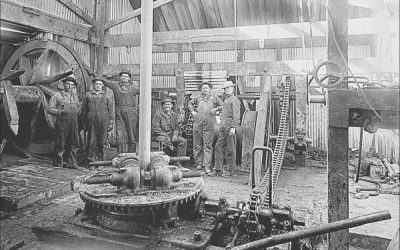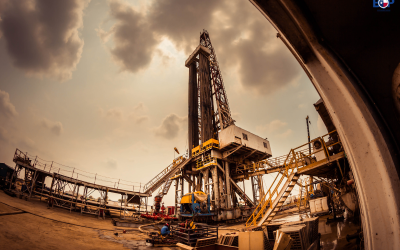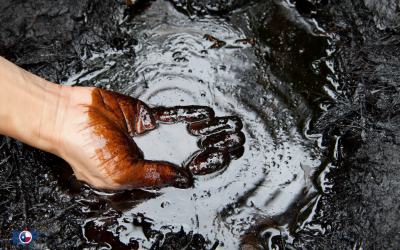Oil well depth plays a huge role in how the oil and natural gas industry operates. It determines how long a drilling operation takes, how expensive it becomes, and what kind of equipment is needed to get the job done safely. Whether you’re talking about a simple onshore site or a complex offshore platform, the numbers are eye-opening. So, how deep do oil wells go? Some drill just a few thousand feet into the earth, while others reach staggering depths beneath the ocean floor. If you’ve ever wondered about oil drilling depth, you’re not alone—and you’re in for a surprise.
How Deep Is Oil in the Ground?
Oil forms over millions of years as organic matter gets buried under layers of sediment. Heat and pressure transform it into crude oil, which then settles in porous rock layers known as reservoirs. These reservoirs don’t sit right under the surface. In most cases, oil can be found anywhere from 1,000 to 20,000 feet deep. Some deposits lie even deeper. How deep is crude oil? That depends on the region. In general, the answer to how far down is oil or how deep is oil in the ground comes down to the local geology. Oil gets trapped beneath nonporous rock layers, creating what’s called an oil trap. These traps build up high pressure, which drilling operations must manage carefully.
Average Depth of Oil Wells in the United States
In the U.S., the average oil well depth depends on location and drilling methods. Most land-based wells fall between 6,000 and 10,000 feet. Offshore wells, however, often go much deeper.
| Drilling Type | Average Depth |
| Onshore (land) wells | 6,000 – 10,000 ft |
| Offshore shallow water | 10,000 – 15,000 ft |
| Offshore deep water | 20,000+ ft |
Spotlight: Texas Oil Fields
Texas leads the nation in oil production, and it’s home to some of the deepest land-based wells. The average depth of an oil well in Texas is around 7,400 feet. In West Texas, especially in the Permian Basin, depths often exceed 10,000 feet. These regions face unique challenges due to high-pressure zones and complex underground formations.
- Permian Basin: Up to 14,000 feet deep
- Eagle Ford Shale: 5,000 – 12,000 feet deep
- Barnett Shale: 7,000 – 8,000 feet deep
- Drilling challenge: High-pressure pockets require specialized blowout preventers
Deepest Oil Wells Ever Drilled
Some oil wells break records for depth. These extreme drilling operations often happen offshore or in difficult terrain. The deepest oil drill in the world has pushed the limits of human engineering.
Z-44 Chayvo Well, Russia
This offshore well in the Sea of Okhotsk holds the current world record. It reaches a true vertical depth of over 40,000 feet. The extended-reach drilling method used here is a milestone in oil drilling technology.
Tiber Oil Field, Gulf of Mexico
Located beneath 4,000 feet of water, this offshore well dives over 35,000 feet into the Earth. It’s one of the deepest U.S. wells and highlights the extreme efforts needed to extract oil from the ocean floor.
Bertha Rogers Well, Oklahoma
Once the deepest well in the U.S., it reached 31,441 feet before hitting molten sulfur. It was drilled on land but ultimately couldn’t be completed due to extreme underground conditions.
What Determines Oil Drilling Depth?
Several factors influence how deep a company has to drill for oil. Local geology and the depth of oil reserves play a huge role. Advancements in drilling equipment make deeper wells more accessible, but they also increase complexity. Companies must factor in high pressure zones, drilling fluids, and rock stability. A blowout preventer is crucial to keeping operations safe during extreme pressure surges. In ultra-deep wells, risk of oil spills and mechanical failures increases, making it vital to use the right tools and processes to extract oil safely.
How Deep Do You Have to Drill for Oil Today?
Modern oil wells reach further than ever before. Thanks to better tech and equipment, oil companies drill for oil in areas that were once impossible to reach.
- Land-based wells: 5,000 to 13,000 feet
- Shallow offshore wells: Up to 15,000 feet
- Ultra-deep offshore wells: 20,000 to 40,000+ feet
- Horizontal drilling: Extends reach without going deeper vertically
Going the Distance for Oil: How Deep Do Oil Wells Go?
Oil wells can be just a few thousand feet deep or stretch over seven miles below the surface. The depth depends on geology, location, and the technology used to reach the reservoir. Offshore platforms especially push the boundaries of how deep oil drilling can go.
As oil rig equipment suppliers in Houston, we understand the unique needs of both onshore and offshore drilling operations. From high-pressure zones in West Texas to deep-sea rigs in the Gulf of Mexico, reliable safety gear like blowout preventers is essential for protecting workers and keeping extraction operations running smoothly.
Need help sourcing equipment that can handle the pressure? Contact us today to request a quote or talk with a specialist about your project needs.




